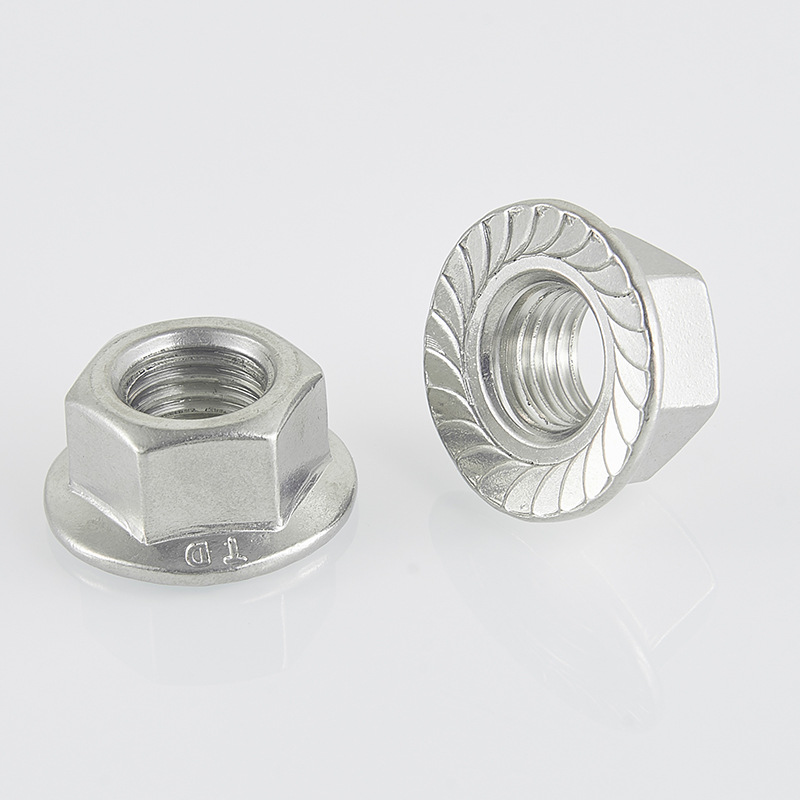

Flanged Lock Nuts for Secure and Stable Machinery Connections
Dec . 31, 2024 17:11 Back to list
Flanged Lock Nuts for Secure and Stable Machinery Connections
Understanding Lock Nut Flanges Essential Components in Mechanical Engineering
In the world of mechanical engineering, the role of fastening components cannot be overstated. Among the plethora of fastening devices, lock nut flanges have carved a niche for themselves due to their unique functionality and reliability. This article aims to explore the significance, design, application, and benefits of lock nut flanges in various industrial sectors.
A lock nut flange is a specialized type of fastener designed to prevent loosening when under vibration or torque. It typically consists of a flange and a lock nut, which together serve to secure two components with a strong grip. The flanged design increases the surface area of contact, allowing it to distribute loads more evenly and minimize stress concentrations. This feature is particularly important in applications where safety and durability are paramount.
Design Features of Lock Nut Flanges
Lock nut flanges are engineered with several key features that enhance their performance. First, the flange itself can come in various shapes and sizes, tailored to the specific requirements of an application. The flange often has mounting holes, enabling easy installation and alignment when securing components together.
The lock nut is usually fitted in a way that it can resist rotation due to applied loads or vibrations. Common designs include serrated or notched surfaces that grip onto the connected components, which significantly reduces the risk of loosening. Additionally, many lock nut flanges are coated with specialized materials to resist corrosion, extending their longevity in harsh environments.
Applications of Lock Nut Flanges
Lock nut flanges find utility across numerous industries, including automotive, aerospace, construction, and manufacturing. In the automotive industry, for instance, they are employed in engine assemblies, suspension components, and transmission systems where vibration and high torque are prevalent. In the aerospace sector, where safety is critical, these fasteners secure vital components in engines and fuselage structures.
lock nut flange

The construction industry also benefits from lock nut flanges in structural connections and mechanical systems where reliability is essential, such as in bridges and high-rise buildings. Furthermore, marine applications utilize these fasteners in environments exposed to saltwater, where rust-resistant coatings make a significant difference in durability.
Benefits of Lock Nut Flanges
One of the primary advantages of using lock nut flanges is their ability to maintain tightness over time, even in challenging conditions. This feature reduces the need for frequent maintenance, saving costs and improving overall efficiency. Additionally, their sturdy construction minimizes the risk of failures that could lead to catastrophic results, ensuring safety across various applications.
Moreover, lock nut flanges are easy to install and remove, which contributes to efficient assembly and disassembly processes. This characteristic is particularly beneficial during equipment maintenance, where quick access to components is needed without compromising secure fastening.
Furthermore, the availability of lock nut flanges in different materials and designs allows for customization based on the specific requirements of any project. Engineers can select the most appropriate type, ensuring compatibility with a wide array of components and systems.
Conclusion
In conclusion, lock nut flanges play an indispensable role in modern mechanical engineering and various industrial sectors. Their innovative design mitigates the issues associated with loosening fasteners, particularly in high-stress environments. As industries continue to evolve and innovate, the importance of reliable fastening solutions like lock nut flanges will only increase, driving advancements in safety and efficiency across all fields of engineering. As such, understanding their significance, applications, and advantages will help engineers and technicians make informed decisions when designing and constructing robust systems.
Latest news
-
High-Strength Hot Dip Galvanized Bolts - Hebei Longze | Corrosion Resistance, Customization
NewsJul.30,2025
-
Hot Dip Galvanized Bolts-Hebei Longze|Corrosion Resistance&High Strength
NewsJul.30,2025
-
High-Strength Hot-Dip Galvanized Bolts-Hebei Longze|Corrosion Resistance&High Strength
NewsJul.30,2025
-
Hot Dip Galvanized Bolts-Hebei Longze|Corrosion Resistance&High Strength
NewsJul.30,2025
-
Hot Dip Galvanized Bolts - Hebei Longze | Corrosion Resistance, High Strength
NewsJul.30,2025
-
High-Strength Hot Dip Galvanized Bolts-Hebei Longze|Corrosion Resistance, Grade 8.8
NewsJul.30,2025

